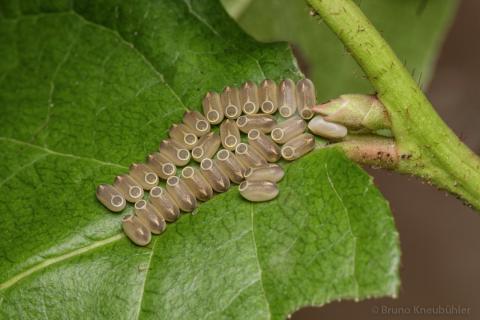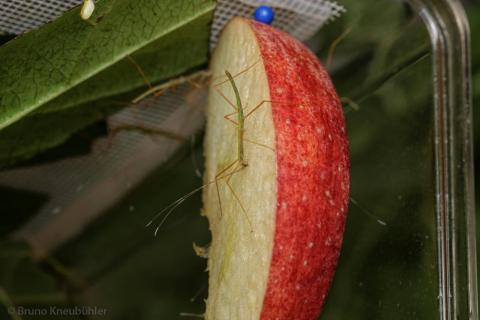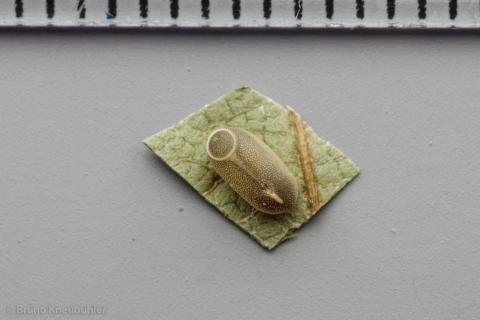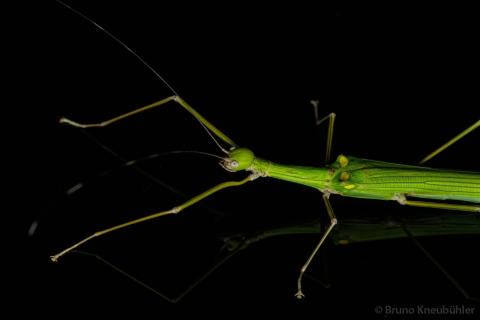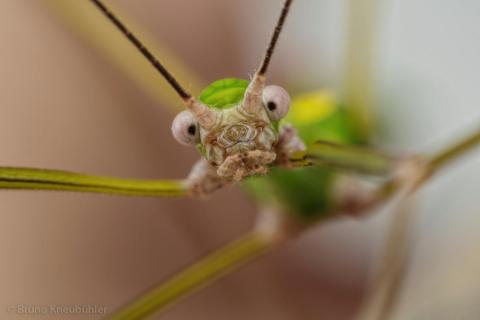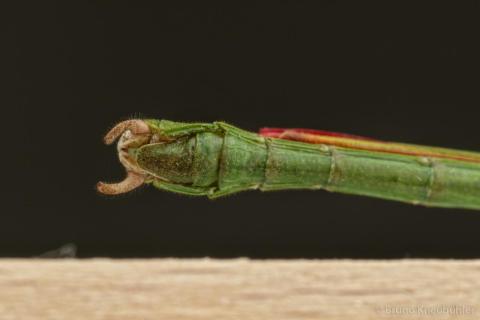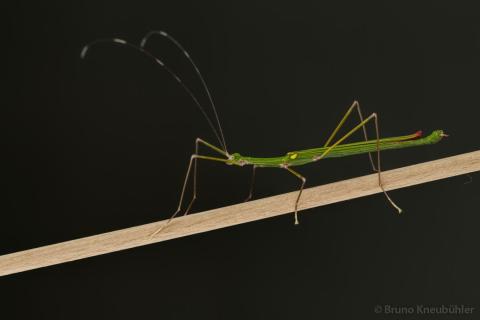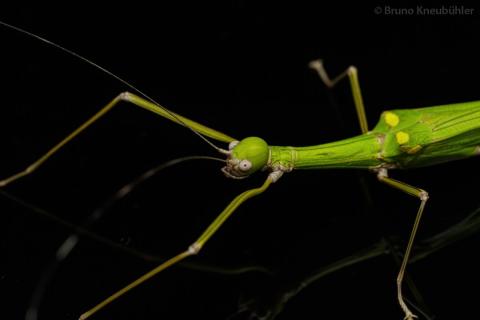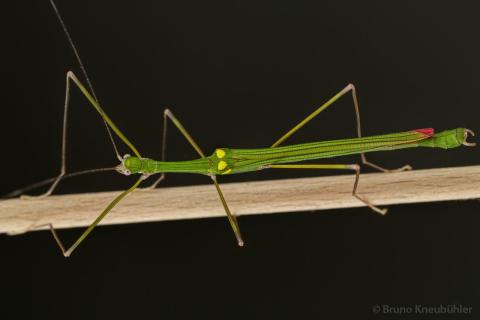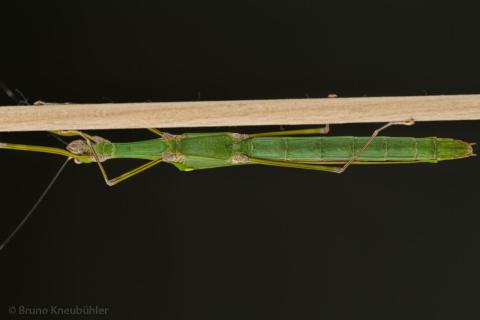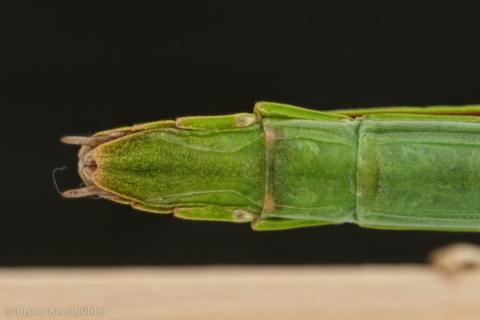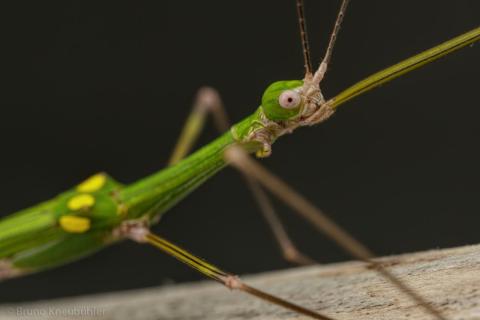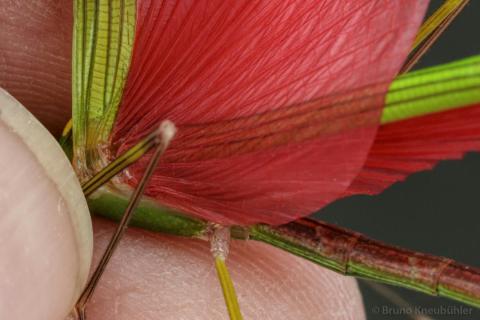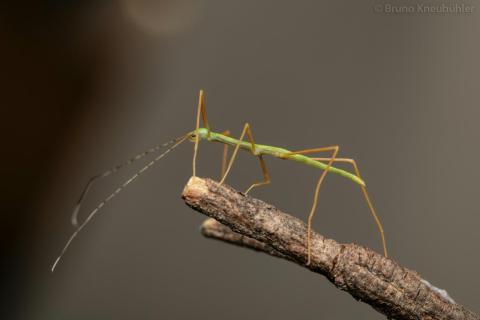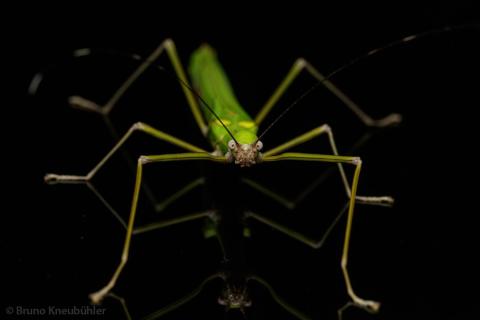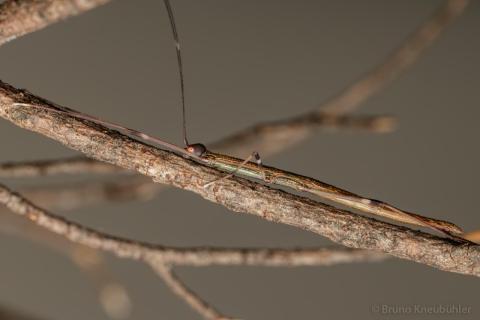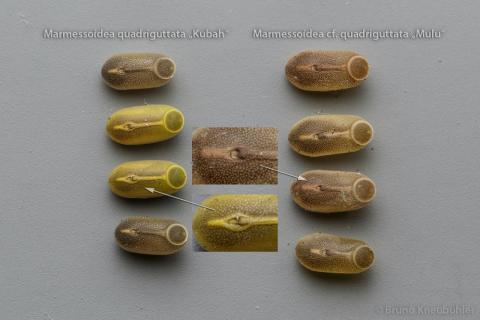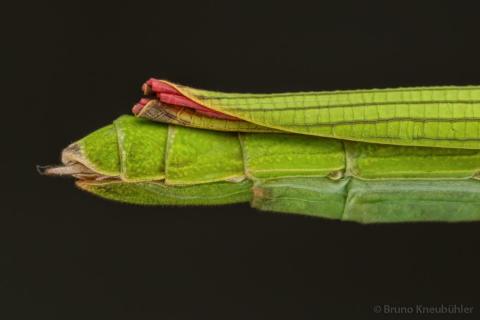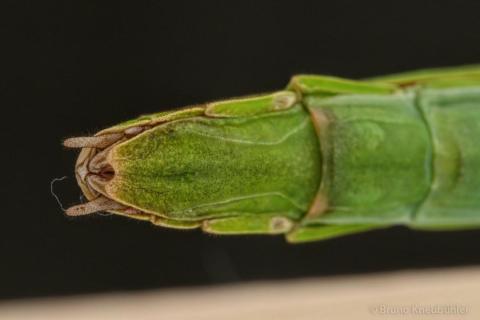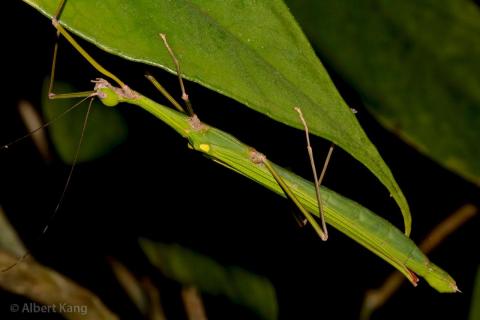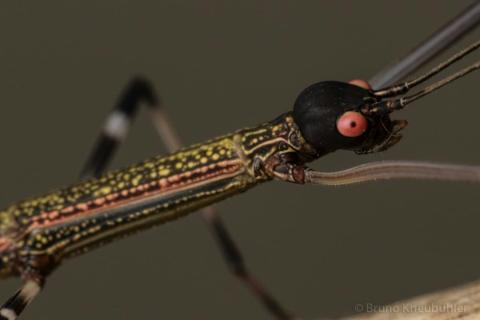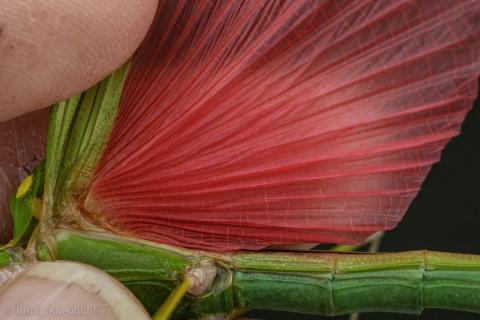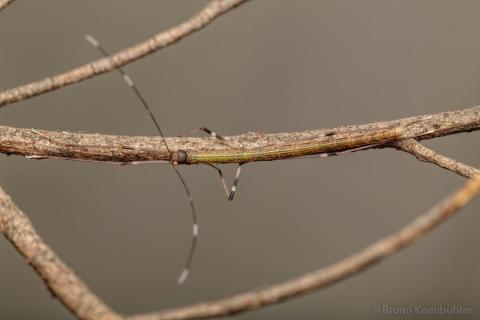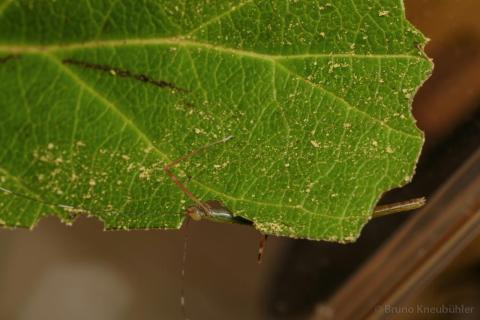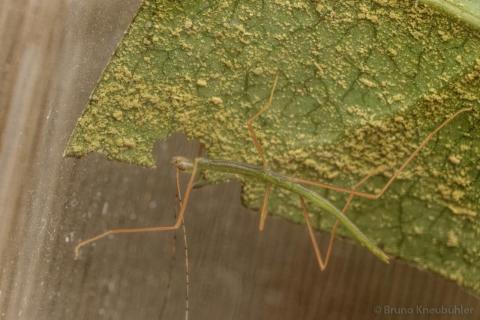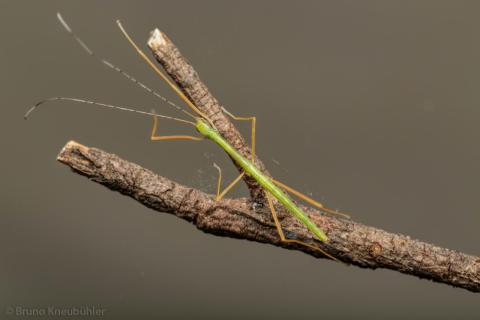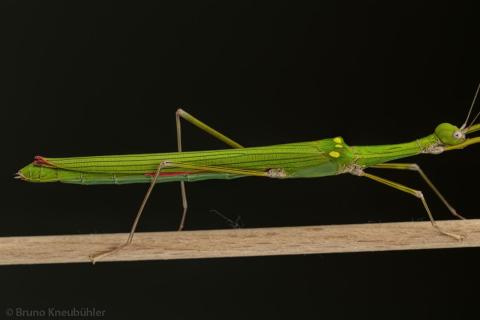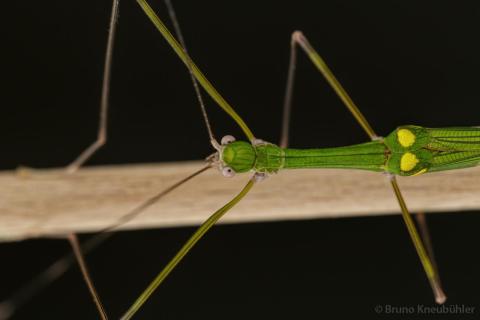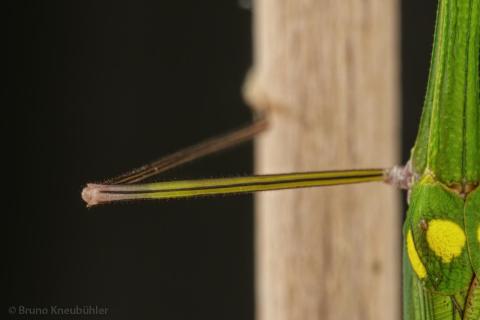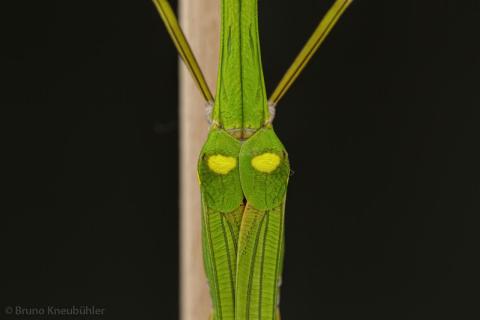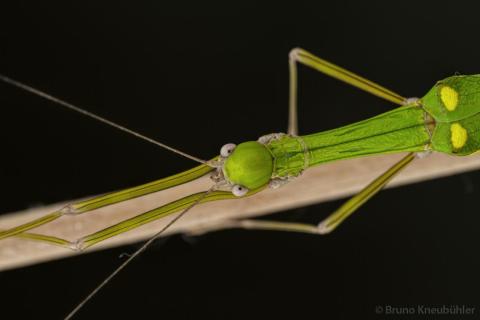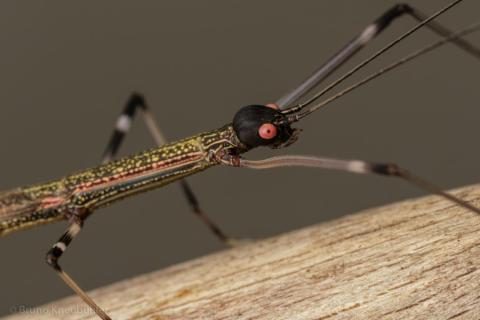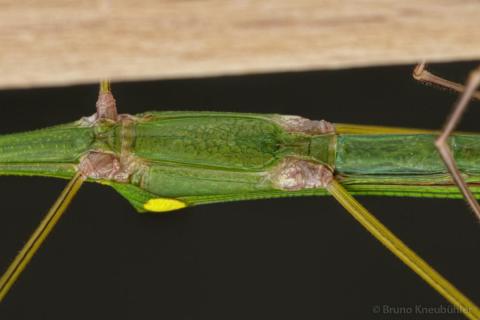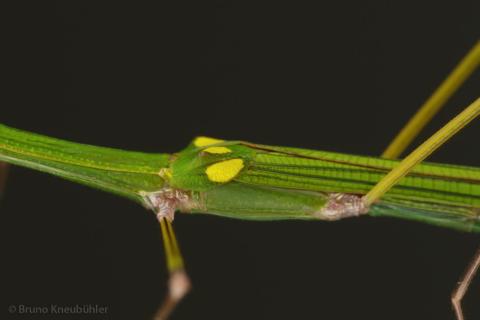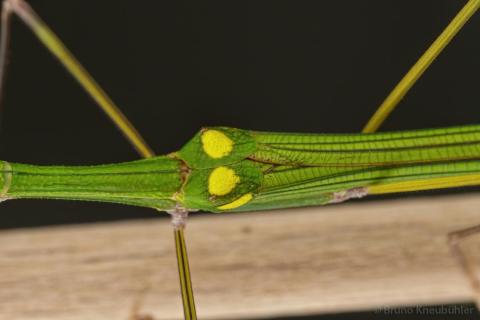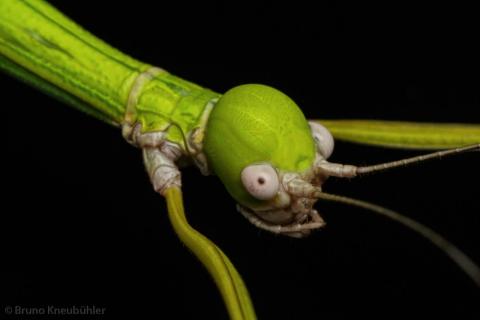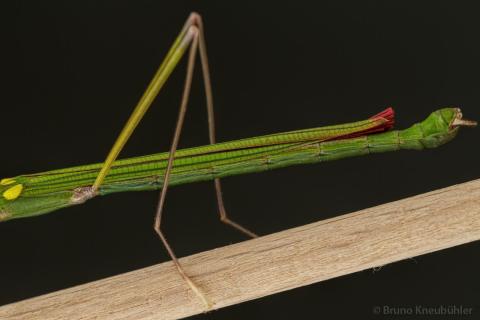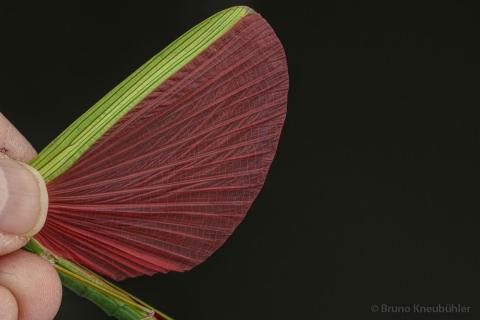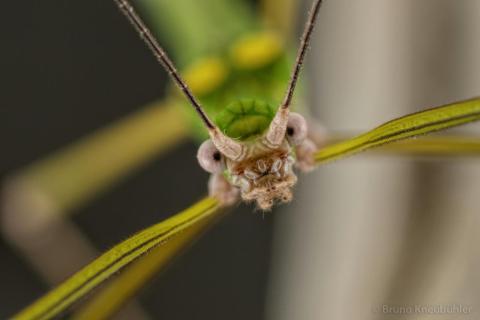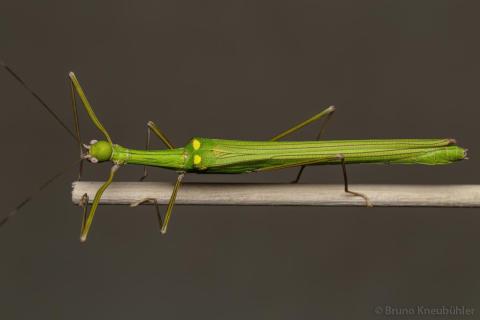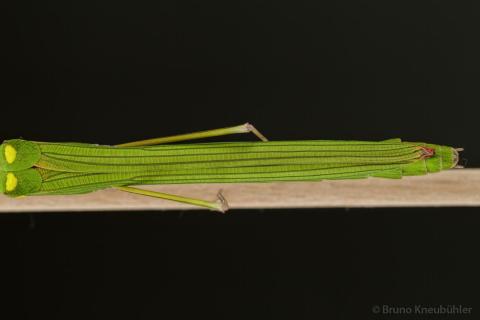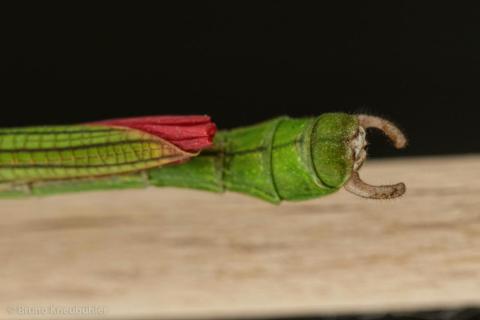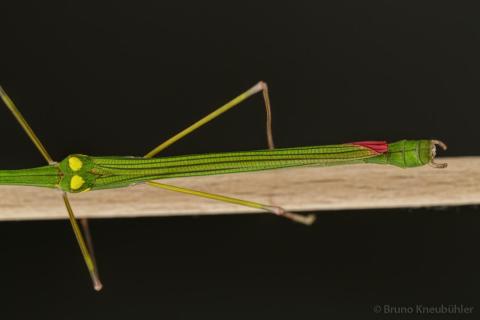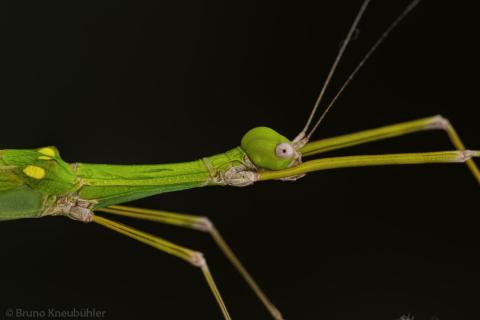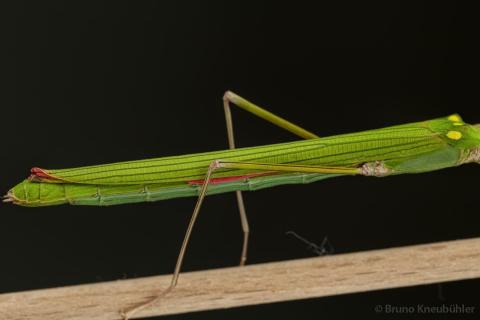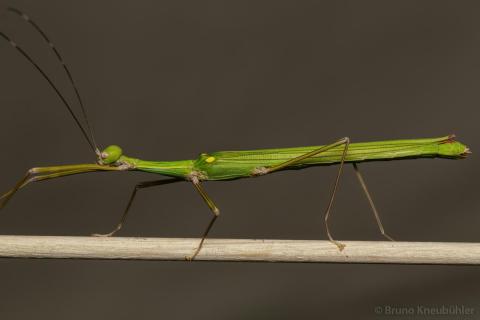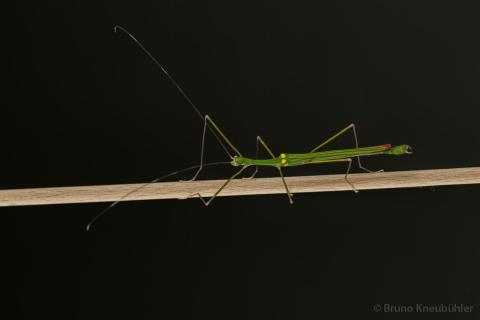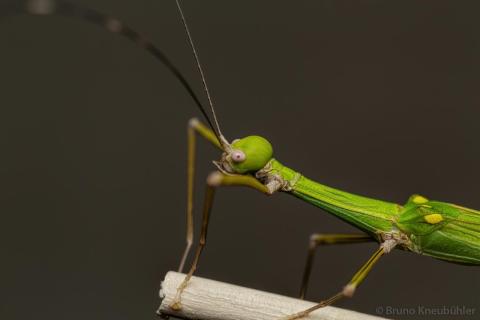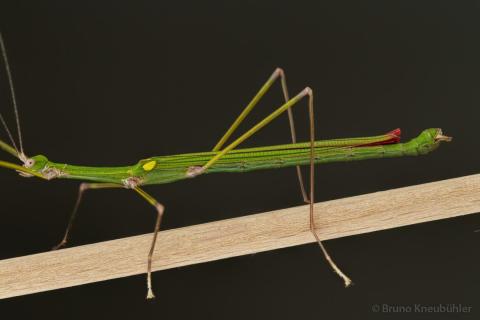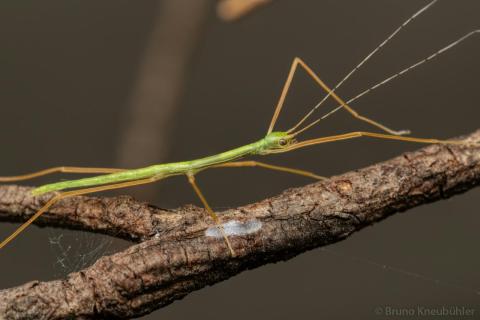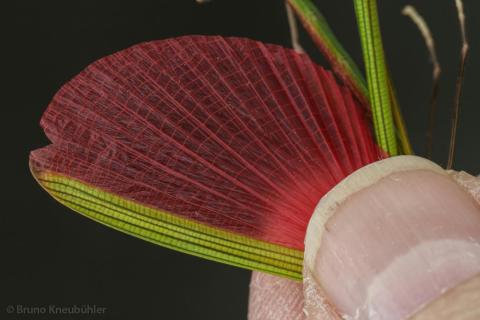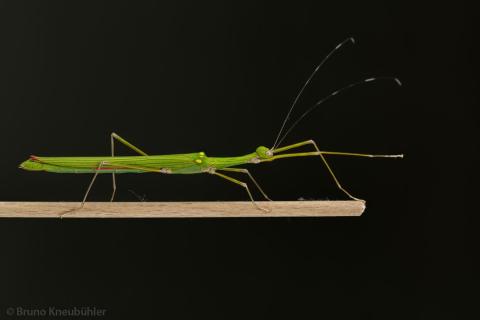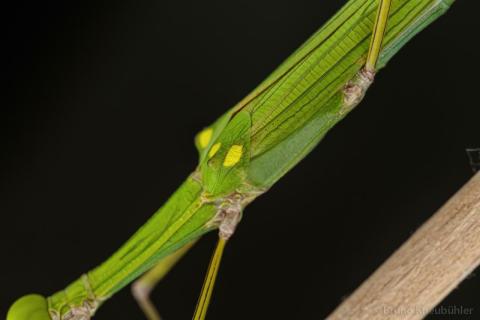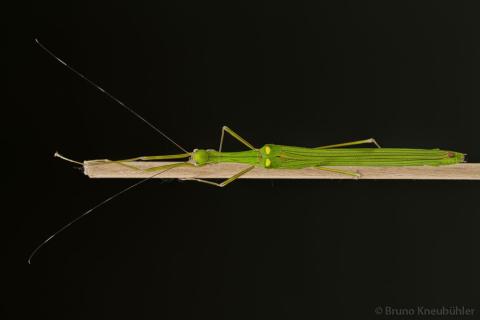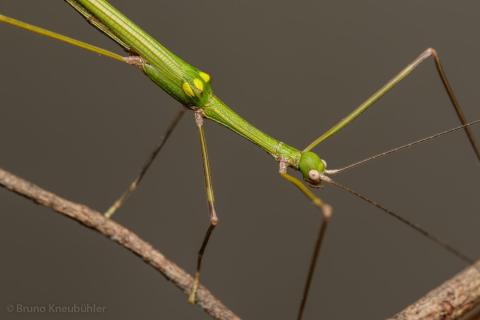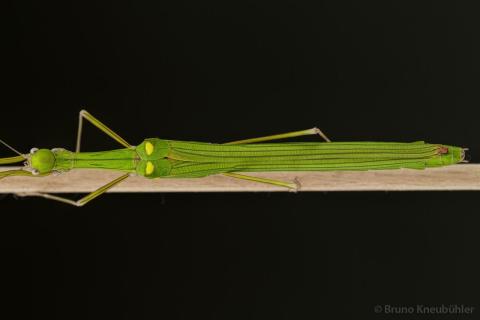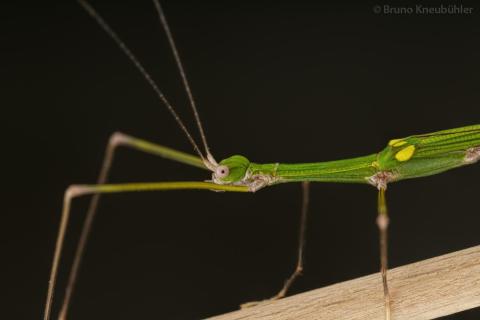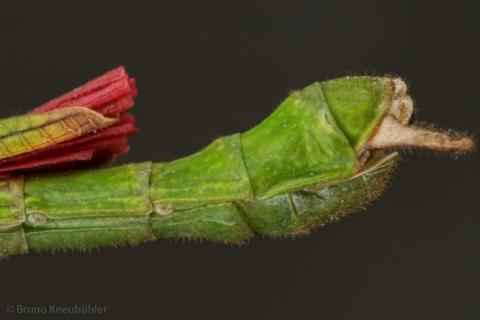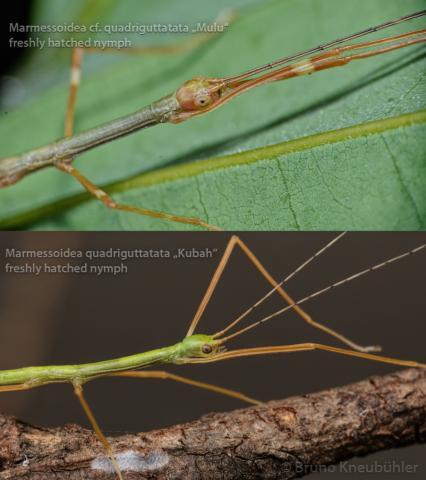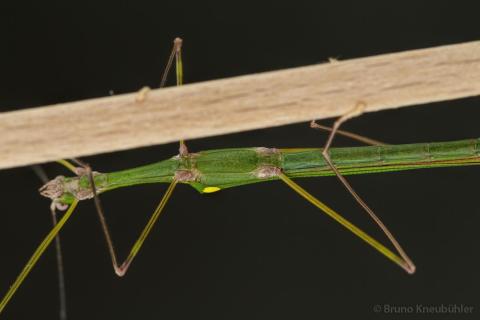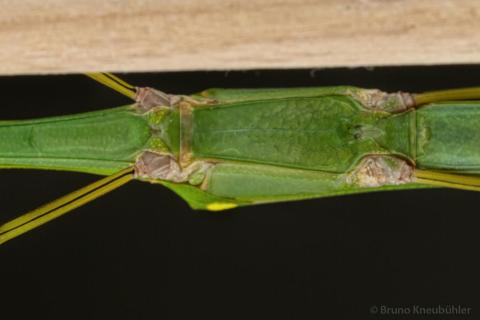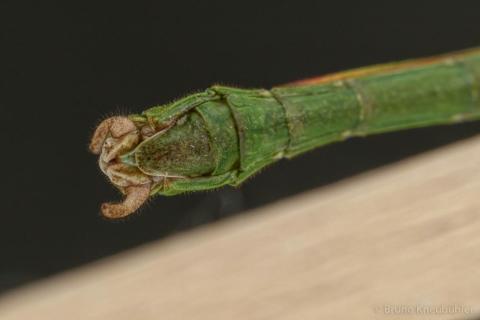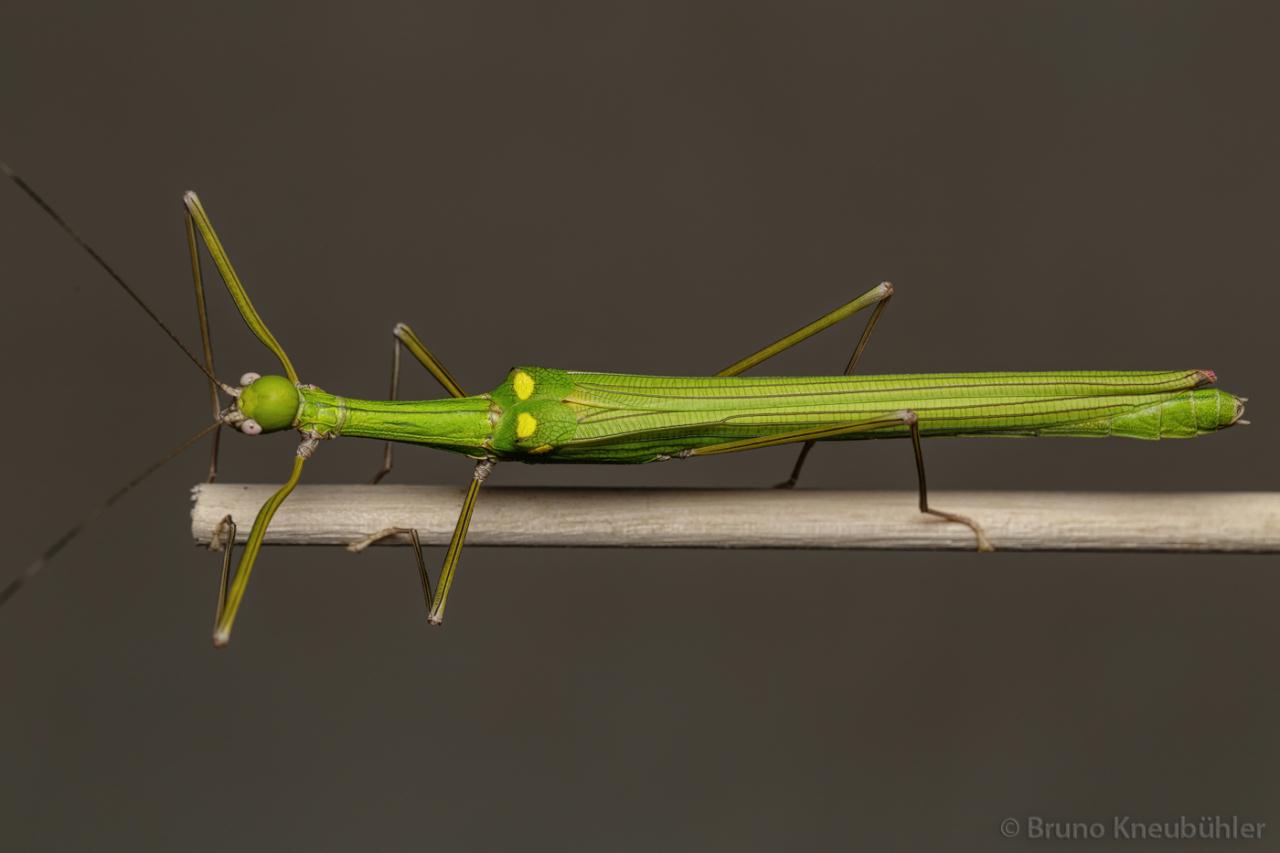
Genus
Species
Stock
CLP
786
Culture status
In culture
Foodplants
Salal (Gaultheria shallon)
Breeding notes
(by Bruno Kneubuehler)
General Informations
- provenience: Kubah NP (Sarawak, Borneo)
- F1 CB culture by Bruno Kneubuehler (2015)
- further taxonomical informations ➤ phasmida.speciesfile.org
- this is a pure culture, and serious breeders are asked to avoid mixing this culture with similar populations from a different provenience
Females
- big, long-legged, winged species
- body length about 8.5 cm
- brightly green colored
- eyes grey
- 4 yellow dots on the forewings
- membranous part of hindwings bright red
- long antennae light-dark banded
Males
- slender, long-legged
- body length 6.5 cm
- brightly green colored
- eyes grey
- 4 yellow dots on the forewings
- membranous part of hindwings bright red
- long antennae light-dark banded
Nymphs
- freshly hatched nymphs are green with orange legs
- about 16 mm long
- on how to distinguish between male and female nymphs
Eggs
- 4 x 2 mm
- freshly laid eggs are yellow
- older eggs are darker (greenish-brown) colored
- eggs are glued to a substrate
- contrary to glued eggs of species from different taxa, the glue of eggs of this species can not be softened with water
- but as these eggs are very hard-shelled they can still be removed cautiously (eg with a plastic spoon) to be incubated seperately
Food Plants
- Salal (Gaultheria shallon)
- to get freshly hatched F2 nymphs to feed on Salal, one has to offer them apple slices (about the apple-slice-trick) for the first 3 - 4 weeks. This way about 50% of the nymphs start to feed on Salal
- an apple-juice coating on Salal might also help to get the nymphs feeding (not tested with this species). But then you have to change the Salal every 5 - 6 days - otherwise mould will grow rather quickly
- freshly hatched F1 nymphs only accepted Salal with Laurel-Coating (about the Coating-Method), while L2+ nymphs and adults fed well on Salal without coating
- common laurel (Laurus nobilis)
nymphs and adults start to feed on laurel easily, but it seems as if they do not thrive on that plant. Mehdi Boulal got them to the adult stage, but the females died without laying eggs. Maybe the essential oils in laurel are not good for them ...
Breeding, Behaviour
- active mainly during the night
- especially older nymphs and adults behave quite frantically when being touched
- males and females can fly quite well
- eggs are glued to food plant leaves or the cage itself
- about 10 - 20 eggs per female every two weeks
- incubation (Cup-Incubation-Method with medium damp vermiculite) about 4 - 5 weeks at 20 - 23 °C
- eggs do not have to touch the semi-humid vermiculite direclty, which matches the natural conditions better
- for a more natural incubation, eggs can be reglued to a double-sided adhesive tape, for details see the care sheet for Marmessoidea rosea "Tapah"
- eggs of this species are not prone to get mouldy, as long as not kept too moist
- nymphs hatch during the night
- males will be adult after 2 months (at 20 - 24°C), females after 3 months
- a humidity of about 70 j- 75% rH seems to be good enough for this species
- one can spray regularly with chlorine-free water, but allow the water to dry up before spraying again
- easy to breed
Basics of phasmids breeding
- keep only one species per cage, overpopulation is one of the main reasons for breeding failures
- keep nymphs seperate from the adults, mainly to protect them during the crucial moulting phases
- choose the cage big enough, when in doubt it is (usually) better to choose a cage too big than too small
- a ventilator often supports good breeding results, as it seems to increase activity and feeding
- provide enough light, but avoid direct sunlight (overheating)
- try to keep day time temperatures below 25°C
- a nocturnal fall of temperature is natural, and thus advantageous
- do not spray too much, phasmids are no fish ! The water should dry up before you spray again
- minimize disturbances (loud music, commotions, light at or during the night, opening up cages in the morning [often a moulting phase] ect.)
